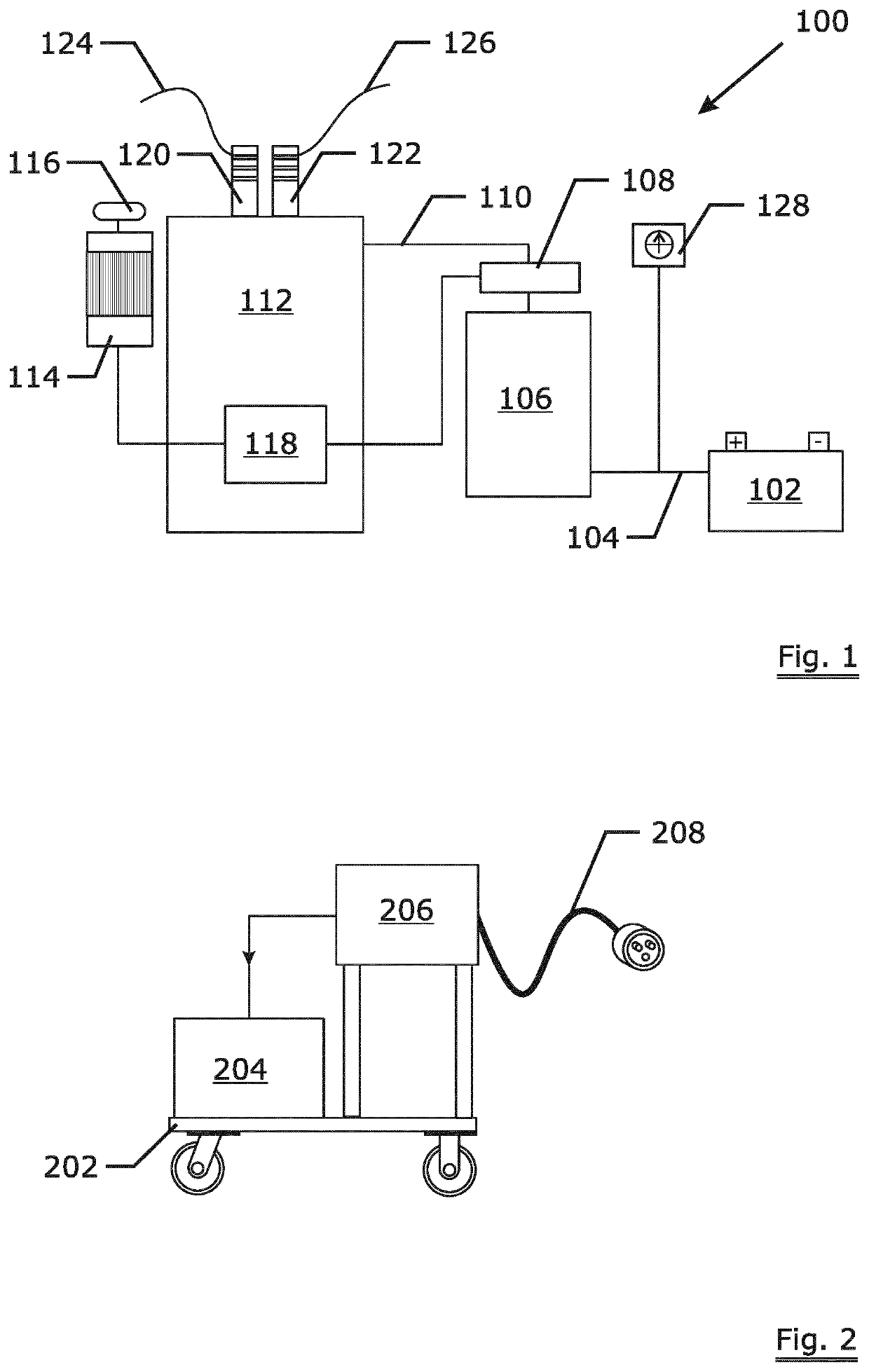Wire welding and grinding station
a welding and wire technology, applied in the direction of welding devices, soldering devices, manufacturing tools, etc., can solve the problems of large changes in metal structure and welding quality, use of cords creating safety hazards for employees, and the connection from a welding station to a commercial net requires long electrical cords, so as to achieve safe and efficient backup battery movement, the effect of easy movemen
- Summary
- Abstract
- Description
- Claims
- Application Information
AI Technical Summary
Benefits of technology
Problems solved by technology
Method used
Image
Examples
Embodiment Construction
[0021]Starting with FIG. 1, a combined welding and grinding station 100 according to the invention has a deep cycle 12 Volt battery 102 that supplies DC current 104 to a 120 Volt power inverter 106. This inverter 106 must be large enough to provide 15 ampere AC needed for providing the desired welds of steel wires. A ground fault circuit interrupter 108 is positioned on the AC connection between the inverter 106 and the rest of the station 100. The inverter provides AC current 110 to the wire welder 112 and the electrical AC motor 114 which drives the grinder 116. The electrical AC motor 114 has a 120 volt soft start module 118 to reduce the inrush current demanded by the electrical AC motor 114 during start-up. The small delay caused by this soft start module 118 has no noticeable impact on the usability. An example of a soft start module would be a Schneider Electric model ATS01N112FT Soft Start Module.
[0022]The wire welder 112 is further equipped with two holding dies 120, 122 ea...
PUM
| Property | Measurement | Unit |
|---|---|---|
| diameters | aaaaa | aaaaa |
| diameter | aaaaa | aaaaa |
| diameter | aaaaa | aaaaa |
Abstract
Description
Claims
Application Information
 Login to View More
Login to View More - R&D
- Intellectual Property
- Life Sciences
- Materials
- Tech Scout
- Unparalleled Data Quality
- Higher Quality Content
- 60% Fewer Hallucinations
Browse by: Latest US Patents, China's latest patents, Technical Efficacy Thesaurus, Application Domain, Technology Topic, Popular Technical Reports.
© 2025 PatSnap. All rights reserved.Legal|Privacy policy|Modern Slavery Act Transparency Statement|Sitemap|About US| Contact US: help@patsnap.com

